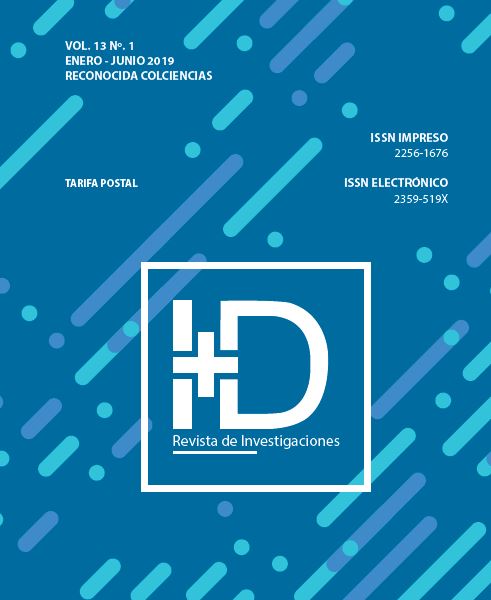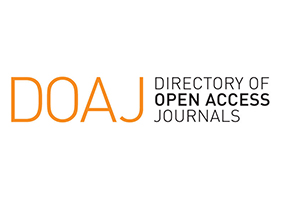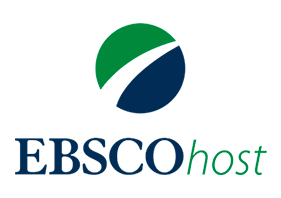Influence of resources and capabilities in finance performance and business competitiveness: a literature review
DOI:
https://doi.org/10.33304/revinv.v13n1-2019013Keywords:
Resources, capabilities, finance performance, competitiveness, literature review.Abstract
The business strategy is a tool that has the aims to obtain a sustainable competitive advantage from the internal peculiarities of companies, such as resources and capabilities. There are several ways to establish this strategy, one of these is based on the Theory of Resources and Capabilities, that attempts to explain competitiveness through the resources and skills that the firm possesses or can access. For this reason, it’s done a literature review that consists of a bibliometric analysis and an analysis of the literature consulted, making it possible to verify the influence of certain types of resources and capabilities on financial performance and business competitiveness, where the combination of dynamic capabilities together with tangible and/or human resources.Downloads
References
Aghaei Chadegani, A., Salehi, H., Yunus, M., Farhadi, H., Fooladi, M., Farhadi, M., & Ale Ebrahim, N. (2013). A Comparison between Two Main Academic Literature Collections: Web of Science and Scopus Databases. Asian Social Science, 9(5), 18–26. https://doi.org/10.5539/ass.v9n5p18>
Alvarez-Melgarejo, M., & Torres-Barreto, M. L. (2018a). Can resources act as capabilities foundations ? A bibliometric analysis. Revista UIS Ingenierías, 17(2), 185–200. https://doi.org/http://orcid.org/0000-0002-4388-5991
Alvarez-Melgarejo, M., & Torres-Barreto, M. L. (2018b). Recursos y capacidades: factores que mejoran la capacidad de absorción. I+ D REVISTA DE INVESTIGACIONES, 12(2), 47–54.
Ariza, H. M. (2015). Revisitando estrategias de sostenibilidad de las empresas a través de una visión sistémica empresarial. I+ D Revista de Investigaciones, 5(1), 23–42.
Bamel, U. K., & Bamel, N. (2018). Organizational resources, KM process capability and strategic flexibility: a dynamic resource-capability perspective. Journal of Knowledge Management. https://doi.org/10.1108/JKM-10-2017-0460
Barney, J. (1991). Firm Resorces and sustained Competitive Advantage. Journal of Management, 17, 99–120.
Collis, D. J. (1994). Research Note: How Valuable are Organizational Capabilities? Strategic Management Journal, 15(S1), 143–152.
Comisión Económica para América Latina y el Caribe (CEPAL). (2017). Estudio Económico de América Latina y el Caribe 2017: la dinámica del ciclo económico actual y los desafíos de política para dinamizar la inversión y el crecimiento. Santiago de Chile.
Cuervo García, A. (1993). El papel de la empresa en la competitividad. Papeles de Economía Española, (56), 363–377.
Escandon, D. M., Arias, A., & Salas, J. A. (2012). Recursos y capacidades que inciden en el desempeño de los subsectores económicos colombianos 2003-2004. Ingeniería y Competitividad, 14(2), 53–67.
Faroque, A. R., & Takahashi, Y. (2015). Export marketing assistance and early internationalizing firm performance Does export commitment matter? ASIA PACIFIC JOURNAL OF MARKETING AND LOGISTICS, 27(3), 421–443. https://doi.org/10.1108/APJML-03-2014-0045
García Velázquez, A., Pineda Domínguez, D., Antonieta, M., & Vallejo, A. (2015). Las capacidades tecnológicas para la innovación en empresas de manufactura. Universidad & Empresa, 17(29), 257–278. https://doi.org/10.12804/rev.univ.empresa.29.2015.11
González, J., López Sáez, P., & De Castro, G. (2009). La Influencia de las Capacidades Dinámicas sobre los Resultados Financieros de la Empresa Pedro LÓPEZ SÁEZ, 19, 105–128.
Grant, R. M. (1991). The Resource-Based Theory of Competitive Advantage: Implications for Strategy Formulation. California Management Review, 33(3), 114–135. https://doi.org/10.2307/41166664
Grant, R. M. (1996). Dirección estratégica. Conceptos, técnicas y aplicaciones. Madrid: Civitas.
Grant, R. M. (2010). Contemporary Strategy Analysis. Barcelona.
Inmyxai, S., & Takahashi, Y. (2009). Firm resources and business performance in the Lao PDR: Implications for SMEs in the LDC context. Journal of Indian Business Research, 1, 163–187. https://doi.org/10.1108/17554190911005345
Ismail, A. I., Rose, R. C., Uli, J., & Abdullah, H. (2012). The relationship between organizational resources, capabilities, systems and Competitive Advantage. Asian Academy of Management Journal, 17(1), 151–173. https://doi.org/10.3923/ibm.2012.176.186
Kamasak, R. (2017). The contribution of tangible and intangible resources, and capabilities to a firm’s profitability and market performance. European Journal of Management and Business Economics, 26(2), 252–275. https://doi.org/10.1108/EJMBE-07-2017-015
Lau, A. K. W., Yam, R. C. M., & Tang, E. P. Y. (2010). The impact of technological innovation capabilities on innovation performance: An empirical study in Hong Kong. Journal of Science and Technology Policy in China, 1(2), 163–186. https://doi.org/10.1108/17585521011059893
Lee, C., Lee, K., & Pennings, J. M. (2001). Internal capabilities, external networks, and performance: A study on technology-based ventures. Strategic Management Journal. https://doi.org/10.1002/smj.181
Lopez-Cabrales, A., Bornay-Barrachina, M., & Diaz-Fernandez, M. (2017). Leadership and dynamic capabilities: the role of HR systems. Personnel Review, 46(2), 255–276. https://doi.org/10.1108/PR-05-2015-0146
Mathuramaytha, C. (2012). The Impacts of intellectual capital on innovative capability: Building the sustain competitive advantage on a resource-based perspective of Thailand industrials. International Business Management, 6(4), 451–457. https://doi.org/10.3923/ibm.2012.451.457
Mazaira Castro, A., Dopico Parada, A., & González Vázquez, E. (2005). Incidencia del grado de orientación al mercado de las organizaciones empresariales en el desarrollo de las capacidades estratégicas de marketing. Revista Europea de Dirección y Economía de La Empresa, 14(3), 181–208.
Morgan, N. A., Kaleka, A., & Katsikeas, C. S. (2004). Antecedents of export venture performance: A theoretical model and empirical assessment. Journal of Marketing, 68, 90–108.
Suárez, J., & Ibarra, S. (2002). La teoría de los recursos y las capacidades. Un enfoque actual en la estrategia empresarial. Anales de Estudios Económicos y Empresariales, 15, 63–89.
Teece, D. J., Pisano, G., & Shuen, A. (1997). Dynamic Capabilities and Strategic Management. StraStrategic Management Journal, 18(7), 509–533.
Torres-Barreto, M. (2017). Product innovations and R & D public funding: How to handle heteroscedasticity and autocorrelation. I+ D Revista de Investigaciones, 9(1), 138–145.
Torres-Barreto, M. L., & Antolinez, D. F. (2017). Exploring the boosting potential of intellectual resources and capabilities on firm´s competitiveness. Espacios, 38(31). Retrieved from http://www.revistaespacios.com/a17v38n31/a17v38n31p35.pdf
United Nations. (2018). SITUACIÓN Y PERSPECTIVAS DE LA ECONOMÍA MUNDIAL 2018. Retrieved from https://www.un.org/development/desa/dpad/publication/situacion-y-perspectivas-de-la-economia-mundial-2018/
Wernerfelt, B. (1986). A Resource-based View of the Firm. Strategic Management Journal, 5(2), 171–180.
Zahra, S. A., & George, G. (2002). Absorptive capacity: A review, reconceptualization, and extension. Academy of Management Review, 27(2), 185–203. https://doi.org/https://doi.org/10.5465/AMR.2002.6587995











